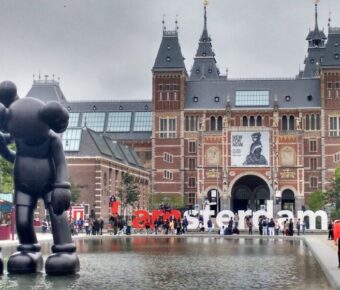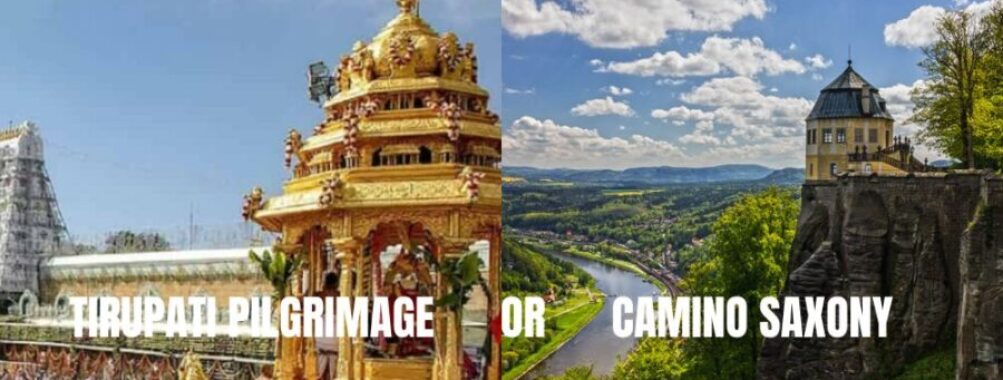
Tirupati Pilgrimage vs Camino Saxony: 7 Stunning Differences Every Spiritual Traveler Must Know in 2025
If you’re into spiritual journeys, Tirupati in India and the Camino route in Saxony, Germany, really couldn’t be more different. Tirupati brings crowds by the millions to its ancient temple perched on the Tirumala hills. Devotees flock here, hoping for blessings from Lord Venkateswara.
Meanwhile, the Ecumenical Pilgrimage Route in Saxony quietly weaves into the famed Camino de Santiago network. It’s a much more subdued, almost meditative European pilgrimage, winding through the German countryside and, honestly, it’s still a bit of a hidden gem.
Both pilgrimages involve plenty of walking and spiritual contemplation, but the differences in cultural context, terrain, and facilities are striking. Camino Saxony forms part of the sprawling network leading all the way to Santiago de Compostela in Spain—where, legend has it, St. James rests. You’ll spot the same yellow arrows and scallop shell signs, guiding you through Europe’s backroads.
Tirupati? Think intense crowds, always. The Saxony route, on the other hand, lets you walk in near solitude, giving you space to actually hear your own thoughts. Tirupati focuses on one main temple, while the Camino is all about the journey—sometimes weeks on foot, through ever-changing landscapes.
Contents
- Key Takeaways
- Overview Of Tirupati Pilgrimage And Camino Saxony
- Definition Of Pilgrimage
- Pilgrimage Route Descriptions
- Significance In Religious Traditions
- Historical And Cultural Context
- History Of Tirupati Pilgrimage
- History Of Camino Saxony
- UNESCO World Heritage Sites
- Route Details And Stages
- Geographical Overview
- Major Stops And Stages
- Scenic And Nature Highlights
- Comparing Pilgrimage Experiences
- Spiritual Importance
- Cultural Traditions And Rituals
- Community And Social Aspects
- Accommodation And Travel Logistics
- Types of Accommodation
- Transportation Options
- Booking and Planning Tips
- Key Route Variations On Camino Saxony
- French Way And Camino Francés
- Coastal And Northern Ways
- Alternative And Lesser-Known Paths
- Landmarks And Points Of Interest
- Santiago De Compostela And Surroundings
- A Coruña And Ferrol
- Görlitz And Saxony Region
- Pilgrimage Challenges And Preparation
- Physical Demands And Hiking Tips
- Best Time To Undertake The Journey
- Safety And Responsible Pilgrimage
- Frequently Asked Questions
- How does the experience of completing the Tirupati pilgrimage compare to walking the Camino de Santiago?
- What are the unique challenges pilgrims face on the Camino del Norte versus those on the Tirupati route?
- Can you list the most scenic pilgrimages in the world that rival the beauty of the Camino routes?
- In terms of spiritual significance, how do well-known European pilgrimage routes differ from the journey to Tirupati?
- What are the key factors to consider when deciding between the Camino Portugues and other pilgrimages such as Tirupati?
- What lesser-known pilgrimage journeys offer a profound experience similar to that of the more popular Camino de Santiago?
- More Travel Guides
Key Takeaways
- Tirupati is a Hindu pilgrimage with a single temple as its focus, while Camino Saxony is part of a European Christian network.
- Camino Saxony provides a peaceful, less-traveled experience compared to both Tirupati and Spain’s busy Camino Frances.
- Both require you to prepare physically, but the terrain, culture, and places to stay are worlds apart.
Overview Of Tirupati Pilgrimage And Camino Saxony
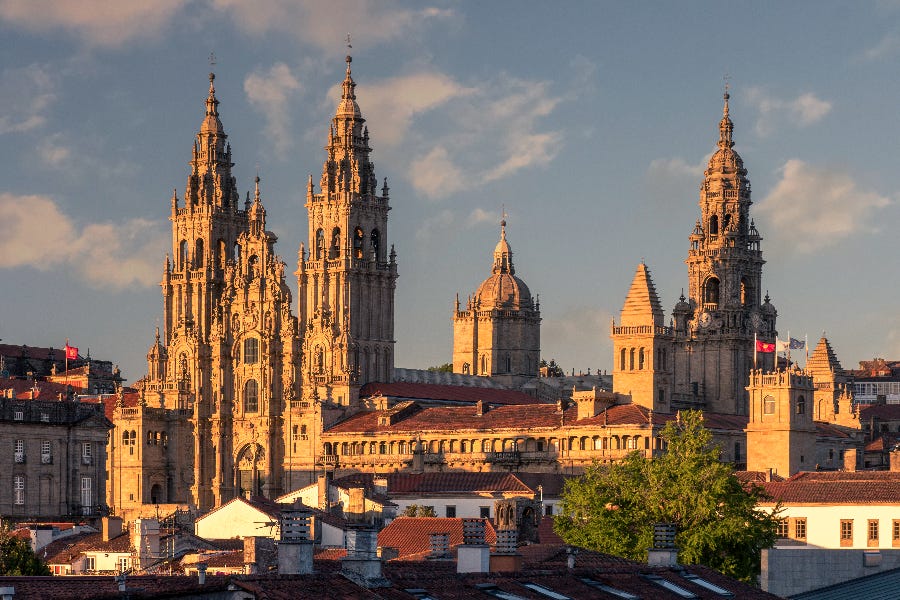
Pilgrimage routes are a quirky mix of spiritual growth and cultural immersion. Tirupati and Camino Saxony stand out as two profoundly different journeys, attracting not just the devout but also curious adventurers every year.
Definition Of Pilgrimage
A pilgrimage isn’t just travel—it’s a quest. People set off for spiritual or religious reasons, often taking on physical challenges that mirror their inner search for meaning.
These journeys have sacred destinations. Tirupati’s is the temple of Lord Venkateswara atop Tirumala Hills. Camino Saxony is a segment of the broader St. James network, all roads eventually leading to Santiago de Compostela.
Unlike regular tourism, pilgrimages come with rituals. Pilgrims might follow dress codes, eat simply, or keep up with prayers. The tough parts of the walk? They’re not just obstacles—they’re part of the experience.
Pilgrimage Route Descriptions
Tirupati Pilgrimage:
The core of Tirupati’s journey is the climb up Tirumala Hills in Andhra Pradesh. Pilgrims tackle 3,500 steps on foot via “Alipiri Mettu,” and it usually takes 2-3 hours. There’s also “Srivari Mettu,” a steeper but shorter 2,000-step path.
If walking isn’t possible, buses and cars provide a ride up. Once you reach the top, brace yourself—queues for “darshan” (seeing the deity) can last 8-10 hours, especially during peak times.
Camino Saxony:
The Saxony route forms part of the massive Camino de Santiago network. Yellow scallop markers lead you through postcard-worthy German landscapes.
The trail snakes through Saxony, Saxony-Anhalt, and Thuringia, linking up with Europe’s bigger St. James paths. You’ll find it much quieter than Spain’s main routes—sometimes you’ll walk for hours without seeing another soul.
Nature and history blend here, making it a dream for those who want contemplative walks and time to reflect.
Significance In Religious Traditions
Tirupati’s Religious Importance:
In Hinduism, a visit to Tirupati is a huge deal. The temple, home to Lord Venkateswara (a form of Vishnu), is believed to be where the deity appeared to save humanity in the Kali Yuga.
Many shave their heads as an offering—shedding vanity and ego. The temple receives mind-boggling donations: hair, gold, money. It’s easily one of the richest religious institutions on the planet.
Annual festivals like Brahmotsavam pull in crowds by the millions. Pilgrims often come to fulfill vows or seek blessings.
Camino Saxony’s Spiritual Context:
Camino routes, including Saxony’s part, have deep Christian roots from the Middle Ages. They all point, eventually, toward Santiago de Compostela, where St. James the Greater is believed to rest.
Unlike Spain’s crowded paths, Germany’s routes offer solitude for real soul-searching. It’s less about the destination, more about the journey.
The Ecumenical Pilgrim Trail links up religious sites across eastern Germany, letting you dive into the region’s Christian heritage while working through your own spiritual questions.
Historical And Cultural Context
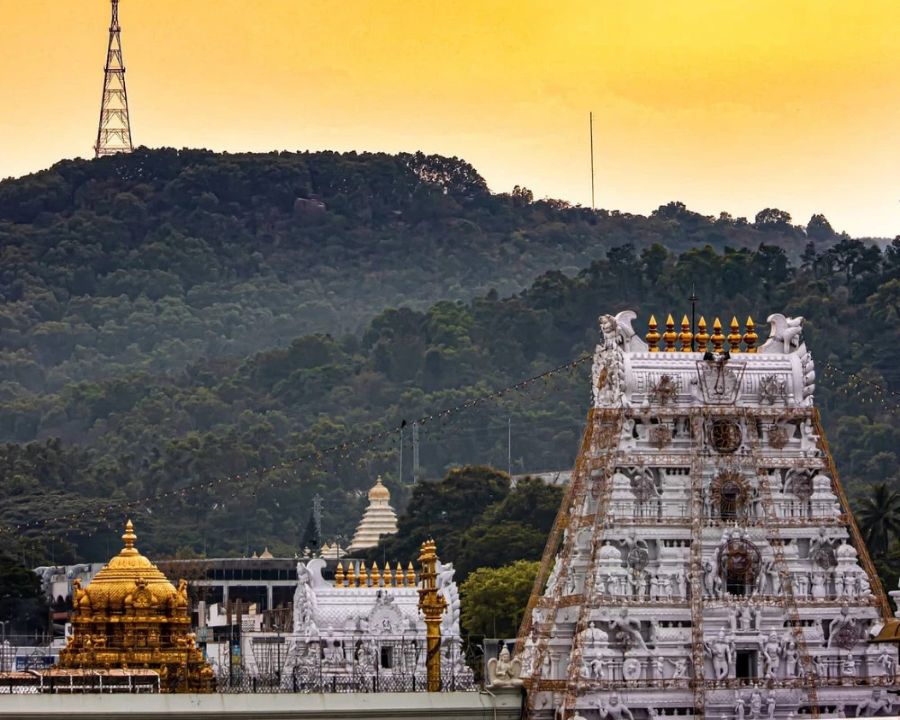
These ancient paths have layers of cultural significance. Both have evolved over centuries, shaped by their own religious and cultural stories.
History Of Tirupati Pilgrimage
Tirupati’s pilgrimage stretches back over 2,000 years, focused on the Sri Venkateswara Temple atop Tirumala Hills. Ancient Tamil texts from the 1st century CE mention it, making it one of the oldest active Hindu temples.
The Pallava dynasty (3rd-9th centuries) put the pilgrimage on the map, and later, the Chola and Vijayanagara empires (10th-16th centuries) made the temple grander, building those iconic gopurams and expanding facilities.
Tirupati’s economic model is unique—devotees have donated hair, jewels, and cash for centuries, making the temple incredibly wealthy. Every year, millions make the climb or opt for modern transport.
The traditional route includes stops at sacred water bodies and smaller shrines, creating a journey that’s as much about purification as it is about arrival.
History Of Camino Saxony
Saxony’s pilgrimage routes aren’t as famous as Spain’s Camino, but their history is rich and a bit overlooked. These paths took shape in the 11th and 12th centuries as Christianity spread through Germanic lands. Unlike Spain’s route, which centers on Saint James, Saxon paths connected monasteries and religious sites in what’s now eastern Germany.
The most notable route linked places like Meissen Cathedral, Dresden’s Kreuzkirche, and Leipzig’s Thomaskirche. The medieval period saw these routes flourish, but things changed fast after the Protestant Reformation in the 16th century.
Martin Luther’s ideas swept through the region, and many pilgrimages faded away. But in recent decades, there’s been a revival—locals and travelers alike are rediscovering these ancient paths, blending spiritual heritage with stunning scenery.
Today’s “Saxony Pilgrimage Route” weaves together Catholic and Protestant sites, a nod to the region’s tangled religious history.
UNESCO World Heritage Sites
Spain’s Camino de Santiago snagged UNESCO World Heritage status in 1993, recognizing its thousand-year role in cultural exchange. The listing spotlights the northern Spanish routes and their French connections.
Tirupati’s temple isn’t a UNESCO site yet, but it’s been on India’s tentative list since 2014. It’s a living tradition and a feat of architecture, still thriving after millennia.
Saxony’s pilgrimage trails pass several UNESCO sites. The Luther memorials in Wittenberg and Eisleben got the nod in 1996. Dresden’s Elbe Valley was briefly listed, though it lost the title in 2009.
These designations help protect the routes and fuel cultural tourism. Walking these paths today, you’re literally following in the footsteps of countless pilgrims, stretching back through the centuries.
Route Details And Stages

The Tirupati pilgrimage and Camino Saxony both serve up unique journeys—mountains, forests, historic towns, and spiritual pit stops all included.
Geographical Overview
Tirupati’s pilgrimage centers on the Tirumala Hills in southern India, with seven peaks symbolizing the seven hoods of Adisesha. The main trek covers about 9 km of steep, wooded paths leading to the Sri Venkateswara Temple. Most pilgrims choose the Alipiri Footpath (3,550 steps) or the steeper, shorter Srivari Mettu (2,200 steps).
Camino Saxony, by contrast, follows old medieval trade routes across eastern Germany. Starting in Görlitz near the Polish border, it heads west through Saxon landscapes for about 470 km, passing rolling hills, valleys, and dense forests before joining the broader Camino network.
The terrain in Saxony is mostly moderate, but certain stretches—like the Ore Mountains or Saxon Switzerland National Park—can be challenging.
Major Stops And Stages
Most people finish Tirupati’s pilgrimage in a day, though some spend extra time exploring the temple complexes. Key stops:
- Alipiri, the starting point with its Ganesha temple
- Rest areas halfway up, with water and shade
- Srinivasa Mangapuram, a historical temple
- Sri Venkateswara Temple, the final goal
Camino Saxony breaks into about 20 stages, each around 20-25 km. Notable stops:
- Görlitz – Medieval city with stunning architecture
- Dresden – Baroque art and culture everywhere
- Leipzig – Music lovers’ paradise, thanks to Bach
- Erfurt – Medieval charm with its unique bridge
- Eisenach – Wartburg Castle’s home turf
Unlike Spain’s Caminos, Saxony doesn’t have tons of pilgrim hostels. You’ll probably stay in small guesthouses or local hotels, which can be a blessing if you like comfort and privacy.
Scenic And Nature Highlights
Tirupati’s route winds through thick forests packed with medicinal plants and rare wildlife. The seven hills—Seshadri, Neeladri, Garudadri, Anjanadri, Vrishabhadri, Narayanadri, and Venkatadri—give you breathtaking views of the Eastern Ghats. If you’re lucky enough to visit during monsoon, waterfalls pop up everywhere.
Camino Saxony’s landscapes are wildly diverse:
- Spree Forest with its labyrinth of canals and old-world villages
- Saxon Switzerland—jaw-dropping sandstone cliffs and river vistas
- Ore Mountains—pine forests and mining towns that feel frozen in time
- Elbe Valley—vineyards and riverside walks
April-June and September-October are the best months to walk. Spring brings wildflowers, autumn glows gold, and the weather’s just right. You might spot deer, wild boar, or rare birds in the nature reserves along the way.
Comparing Pilgrimage Experiences
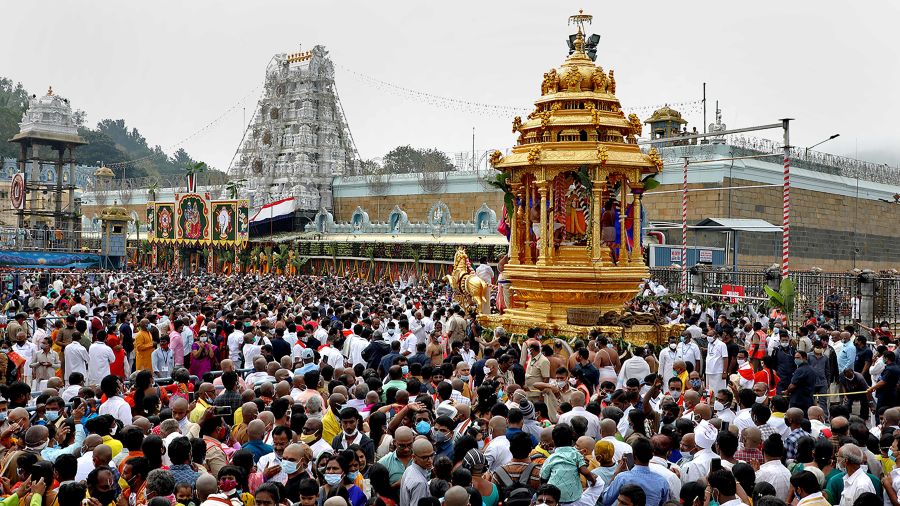
Spiritual travelers find that Tirupati and the Camino de Santiago offer completely different vibes. Both paths connect you to faith in their own ways, but the traditions, rituals, and sense of community couldn’t be more distinct.
Spiritual Importance
Tirupati’s pilgrimage is all about devotion to Lord Venkateswara—a form of Vishnu. Pilgrims make the tough climb, often the full 3,500 steps, as an act of faith. Shaving your head becomes a symbolic gesture, letting go of ego.
The Way of St. James (Camino de Santiago) honors the apostle Saint James, whose remains are believed to rest in Santiago de Compostela. Here, the journey is as much about self-discovery as it is about faith. Pilgrims carry a “pilgrim’s passport,” collecting stamps at every stop.
Unlike Tirupati, which has one sacred endpoint, the Camino offers multiple routes and a journey that can last weeks or months. Many see the physical trek as a metaphor for their own spiritual path—one step at a time, learning as they go.
Cultural Traditions And Rituals
Tirupati’s rituals draw from ancient Vedic traditions that go back thousands of years. Most pilgrims fast before their visit, then jump into the Darshan ceremony to get a glimpse of the deity.
The famous laddu prasadam—a sweet treat—gets handed out to visitors as a blessing. You’ll probably notice the buzz when the trays come out; nobody leaves without one.
On the Camino, Christian traditions blend with local cultures in Spain, France, and Portugal. Pilgrims usually carry a scallop shell and a walking stick. The journey ends with the Pilgrim’s Mass at Santiago Cathedral, where you might catch the enormous Botafumeiro incense burner swinging through the air.
Both pilgrimages weave in water rituals. At Tirupati, pilgrims dip in the sacred pools for purification. On the Camino, there’s the quirky Fountain of Wine in Irache—yes, wine, not water—where tired travelers can fill a cup and take a breather.
Community And Social Aspects
Tirupati creates these short-lived but really intense bonds among pilgrims. People often share meals and stay together in choultries—simple lodging halls.
Volunteers keep the annadanam service running, serving free food to everyone. It’s a rare space where social status doesn’t matter much, at least for a meal.
On the Camino, you’ll hear about the “Camino family.” Pilgrims meet in albergues (hostels), and these connections sometimes stick for years after the journey ends.
Tradition and technology mix on both routes. Tirupati now has online darshan bookings. Camino hikers use smartphone apps, but still swap stories over communal dinners. The heart of it all? Strangers turning into companions on a sacred road.
Accommodation And Travel Logistics
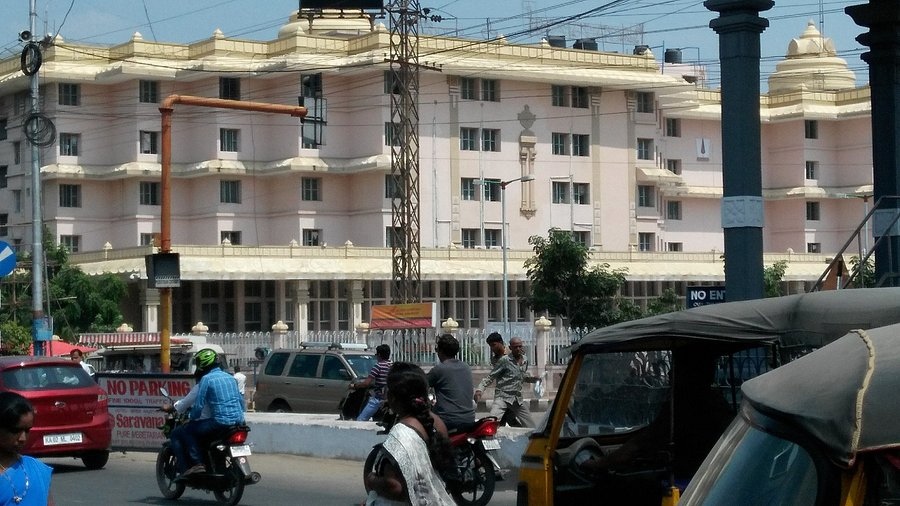
The Tirupati and Camino de Santiago pilgrimages both offer lodging that’s tied closely to their spiritual roots. Your comfort and travel arrangements will shape your experience more than you might expect.
Types of Accommodation
Along the Tirupati route, the Tirumala Tirupati Devasthanams (TTD) manages most places to stay. Rooms start at Rs.200 for non-AC, Rs.400 for AC—so not fancy, but clean and functional.
The Sreenivasam Complex, right across from the RTC bus stand, is a solid pick if you want easy access. TTD splits its accommodations between Tirumala (up the hill) and Tirupati (down in the city). They’re built for pilgrims, not luxury travelers, so set your expectations accordingly.
The Camino, by contrast, gives you more variety. You’ll run into:
- Albergues: Cheap hostels with bunk beds and shared bathrooms
- Pensions: Family-run, basic hotels
- Historic paradores: Swanky, sometimes jaw-dropping, old buildings turned into hotels
Big cities on the Camino offer more options, while tiny villages might only have a single hostel.
Transportation Options
Getting to Tirupati? Most people arrive by train, since it’s well-connected across India. Buses run regularly from nearby towns, and there’s a domestic airport if you want to fly.
Local transport is straightforward:
- Free TTD buses shuttle between Tirupati and Tirumala
- Prepaid taxis are available
- Auto-rickshaws work for short hops
On the Camino, you’ll need to get to your chosen starting point—usually by train or bus. After that, you walk. Plan for 15–25km a day, unless you’re taking a rest or need a taxi for an emergency.
Many Camino pilgrims treat the walk itself as the journey, while Tirupati visitors focus on reaching the temple.
Booking and Planning Tips
For Tirupati, booking ahead is non-negotiable, especially around festivals and weekends. The TTD’s online system opens 30 days in advance.
A few hard-earned tips:
- Reserve your room 2–3 weeks ahead if you can
- Keep digital copies of your ID handy
- If traveling with elderly folks, look for special quota rooms
On the Camino, your booking strategy depends on the season.
- In summer (June–August), book ahead—beds fill up fast
- Off-season, you can usually find something on arrival
- It’s smart to reserve your first and last night, just for peace of mind
Travel light! On the Camino, you’ll carry everything you need. For Tirupati, comfortable clothing and solid walking shoes are your best friends for the long temple queues and hill climbs.
Key Route Variations On Camino Saxony
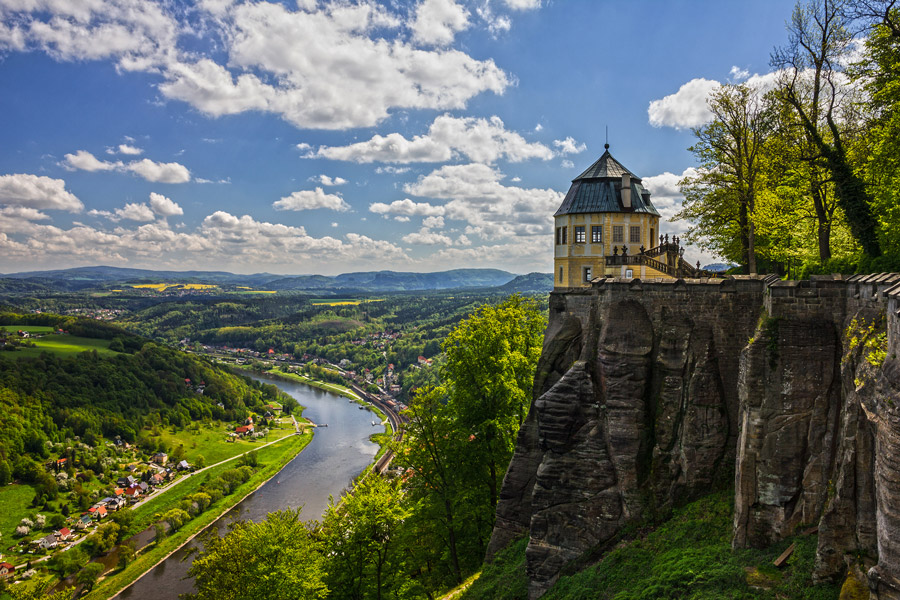
Camino Saxony isn’t just one trail—it’s a network of routes, each with its own flavor and quirks. Your choice will shape your entire experience, so don’t just follow the crowds.
French Way And Camino Francés
The French Way (Camino Francés) wins the popularity contest every year. Starting from Saint-Jean-Pied-de-Port near the French-Spanish border, this 800km path cuts through a wild mix of landscapes and centuries-old towns.
The infrastructure is fantastic. Albergues, restaurants, and support services pop up everywhere. The terrain keeps things interesting, from the tough Pyrenees to Galicia’s gentle hills.
Major cities like Pamplona, Burgos, and León break up the rural stretches. If you’re new to the Camino, this route is probably the easiest to navigate, thanks to its clear signage and the ever-present stream of fellow travelers.
Coastal And Northern Ways
If you crave sea breezes and fewer people, the Coastal Way (Camino del Norte) and Northern Way are your ticket. These trails hug Spain’s northern coast, offering epic ocean views and cooler temps—a relief in the summer heat.
The Coastal Way starts in Irún and covers about 820km, with a surprising 17,000 meters of elevation gain. The best window is April to October. You’ll pass through gems like San Sebastián and Santander before linking up with other routes.
It’s more challenging than the French Way, with lots of ups and downs. Services are there but sometimes spaced out, so plan ahead—especially for food and shelter.
Alternative And Lesser-Known Paths
The Camino Saxony network hides some underrated gems. The Primitive Way (Camino Primitivo) is the oldest route, dating to the 9th century. It’s only about 320km, but the mountains in Asturias will test your legs.
The Portuguese Way (Camino Portugués) starts in Lisbon or Porto. You can go Central (through villages and vineyards, with better infrastructure) or Coastal (for Atlantic views).
For something truly off the beaten path, try the Via de la Plata from Seville. It’s a 1000km trek along old Roman roads, with very few pilgrims. Solitude and reflection come naturally here.
These lesser-known paths demand more planning—services are sparse. But they reward you with authentic encounters and a less commercialized vibe. If you’re after real connection, these are worth considering.
Landmarks And Points Of Interest

Tirupati and the Camino Saxony both deliver when it comes to jaw-dropping landmarks. Whether you’re into architecture, history, or spiritual spots, you’ll find plenty to linger over.
Santiago De Compostela And Surroundings
The Cathedral of Santiago de Compostela is the grand finale for most pilgrims. This Romanesque masterpiece, with its ornate Baroque front, holds the tomb of St. James and draws thousands every day.
The Botafumeiro—the giant incense burner—swings across the nave during special services. It’s a spectacle you won’t forget.
Praza do Obradoiro, the main square, is where everyone collapses, celebrates, and soaks up the cathedral’s western façade.
The old town, a UNESCO World Heritage site, is all winding medieval lanes and granite buildings. The Monastery of San Martiño Pinario, second only to the cathedral in size, is worth a peek.
Monte do Gozo (Hill of Joy) gives pilgrims their first glimpse of the cathedral spires—a genuinely emotional moment near the journey’s end.
A Coruña And Ferrol
A Coruña’s claim to fame is the Tower of Hercules, the world’s oldest working Roman lighthouse. The views are sweeping, and the site marks the symbolic start of the English Way.
The town itself is charming, with plazas and those glass-fronted balconies (galerías) that earned it the nickname “Crystal City.” Maria Pita Square buzzes with life and is a solid spot to try Galician food.
Ferrol, a naval city with a proud maritime history, features the San Felipe Castle and a Naval Museum. Pilgrims officially start the English Way at the Church of San Francisco.
Walking the coast between these cities rewards you with Atlantic vistas and peaceful beaches like Doniños and San Jorge—perfect for quiet reflection before you really get going.
Görlitz And Saxony Region
Görlitz—sometimes called “Görliwood” thanks to its film credits—boasts over 4,000 historic buildings, spanning Gothic to Baroque. The Peterskirche (St. Peter’s Church) with its sun organ is a must-see for Saxon pilgrims.
The Altstadtbrücke (Old Town Bridge) links Görlitz with Zgorzelec in Poland, a cool reminder that pilgrimages cross borders, both physical and spiritual.
Saxony’s Via Sacra includes the Cistercian monastery of St. Marienthal, Germany’s oldest female monastery. The grounds are peaceful, the baroque church serene.
Saxon Switzerland National Park’s sandstone towers create natural cathedrals. The Bastei Bridge, perched above the Elbe, delivers some of the best views in the region.
Dresden’s Frauenkirche, destroyed in WWII and painstakingly rebuilt, stands as a symbol of renewal—something that resonates deeply with many modern pilgrims.
Pilgrimage Challenges And Preparation
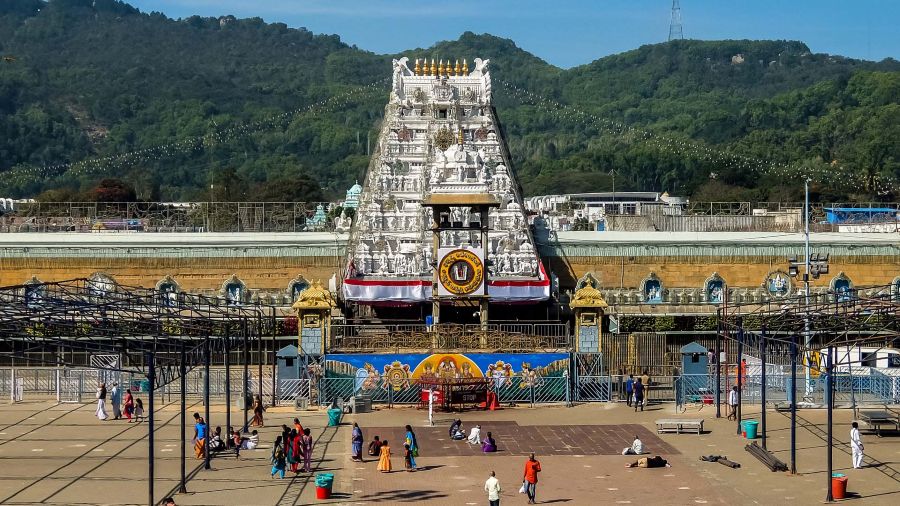
Tirupati and the Camino de Santiago each throw their own curveballs at pilgrims. A little preparation goes a long way toward making your journey memorable for the right reasons.
Physical Demands And Hiking Tips
Don’t underestimate the physical challenge. Tirupati means climbing about 3,500 steps up Tirumala Hill—2 to 3 hours for most folks. The Camino asks for 15–20 miles a day, and not just for a weekend.
Before you go:
- Build stamina by walking 3–5 miles daily for at least a month
- Break in your shoes—blisters can ruin a trip
- Pack light—seriously, you’ll thank yourself later
I’ve seen plenty of pilgrims limping along, cursing their socks. Invest in good, moisture-wicking pairs. Trekking poles help on the Camino, especially for the up-and-down bits.
For Tirupati, stair climbing practice is a game changer. Some locals skip the steps and take the forest path, which is longer but easier on the knees.
Best Time To Undertake The Journey
Timing can make or break your pilgrimage.
For Tirupati:
- November to February is most comfortable (60–75°F)
- Skip monsoon season (June–September)—slippery steps are no joke
- Summer (March–May) gets brutally hot, often over 100°F
The Camino has its own rhythm:
- May–June and September–October are ideal
- July and August mean crowds and heat, especially on the Frances route
- Winter (November–March) is quiet, but many services close and snow can block mountain passes
I’ve walked in both high and low seasons. Shoulder months hit the sweet spot—good weather, manageable crowds.
Safety And Responsible Pilgrimage
Your safety and environmental impact matter, whether you’re in a temple crowd or hiking solo.
At Tirupati:
- Bring only what you need—crowds can attract pickpockets
- Register for accommodations at official counters
- Dress modestly and leave your shoes at the temple entrance
On the Camino:
- Get your credencial (pilgrim passport) for hostel access
- Don’t walk alone at night, especially in remote areas
- Carry a small first aid kit and know basic blister care
Both routes face environmental strain. Carry a reusable water bottle, and skip single-use plastics. These sacred places deserve respect.
“Leave no trace” is catching on, but some stretches still struggle with litter. I’ve noticed more bins on the Camino lately, but remote areas need extra care.
Frequently Asked Questions
Pilgrims heading out on sacred journeys always have questions—sometimes more than answers. Tirupati and the Camino de Santiago each offer their own blend of tradition, physical challenge, and spiritual reward.
How does the experience of completing the Tirupati pilgrimage compare to walking the Camino de Santiago?
Tirupati is a whirlwind—shorter, yes, but honestly, it’s intense. You’ll dive right into a sea of pilgrims, all buzzing with energy, crowding the temple of Lord Venkateswara. The air’s thick with incense, chants, and the rhythm of rituals.
On the flip side, the Camino de Santiago stretches out for weeks. You’ll wander through sleepy villages, rolling fields, and ancient towns. There’s plenty of time to let your thoughts drift, or maybe just soak in the silence and scenery as your feet do the work.
At Tirupati, you’ll notice the rituals stand front and center—head-shaving, offerings, and prayers. The Camino? It’s more about the act of walking itself, letting the journey shape your devotion.
What are the unique challenges pilgrims face on the Camino del Norte versus those on the Tirupati route?
The Camino del Norte hugs Spain’s wild northern coastline. Expect climbs that’ll test your legs and weather that refuses to cooperate—think surprise rain, even when you least expect it.
You’ll weave through regions like Basque Country and Galicia, each with its own language quirks and cultural curveballs. Don’t count on everyone speaking English, so a phrasebook or translation app comes in handy.
Tirupati throws different hurdles your way. The crowds can get downright overwhelming, especially during festivals. If you’re aiming for the traditional path, brace yourself for 3,500 steps—your calves will remember it. Long queues for darshan are pretty much guaranteed, so patience isn’t optional.
Can you list the most scenic pilgrimages in the world that rival the beauty of the Camino routes?
If you’re chasing scenery, the Kumano Kodo in Japan is a dream. Ancient forests, mossy shrines, and waterfalls that look like they belong in a painting—plus, you’re literally walking in the footsteps of emperors.
Kailash Mansarovar Yatra in Tibet? The raw drama of the Himalayas surrounds you, with sacred Mount Kailash looming in the distance. It’s spiritual and jaw-droppingly beautiful, but also not for the faint of heart.
Norway’s St. Olav Ways wind through valleys and fjords so stunning you’ll probably stop just to stare. Check out ancient pilgrimage routes to Trondheim if you want something off the usual radar.
Shikoku Pilgrimage in Japan offers a different vibe—88 temples, coastal breezes, and quiet mountain paths. Rural Japan has a way of sneaking up on you with its beauty.
In terms of spiritual significance, how do well-known European pilgrimage routes differ from the journey to Tirupati?
On European routes like the Camino, the journey itself becomes the spiritual practice. Every day’s walk, every conversation, even those blisters—they’re all part of the transformation. The sense of shared purpose with fellow travelers? You can’t really plan for that, but it’s powerful.
Tirupati zeroes in on the destination. The rituals, the darshan, the energy at the temple—they’re the heart of the experience. You’re following traditions that have shaped Hindu devotion for millennia.
European pilgrimages often weave in layers of Christian history and symbolism. Tirupati? It’s pure Hindu tradition, with roots running deep into the past.
What are the key factors to consider when deciding between the Camino Portugues and other pilgrimages such as Tirupati?
Time’s a big one. The Camino Portugues usually takes at least a week if you start from Porto, and more if you want to go all the way. Tirupati? You can wrap it up in a day or two, though you might want to linger.
Culture shifts dramatically between the two. On the Camino, you’ll get a taste of Portuguese and Spanish life—food, language, quirky local festivals. Tirupati immerses you in South Indian culture, from the food to the music echoing through the temple halls.
Physically, the Camino asks for steady endurance. You’ll cover 20-25km most days, so good shoes matter. Tirupati’s challenge is more about stamina for standing around and climbing endless steps.
Budget’s worth thinking about. The Camino adds up with nightly stays and meals over weeks, while Tirupati can be surprisingly affordable—unless you splurge on special darshan tickets, which, honestly, is tempting if you’re short on time.
What lesser-known pilgrimage journeys offer a profound experience similar to that of the more popular Camino de Santiago?
The Via Francigena, which actually predates the Camino, starts in Canterbury and winds all the way down to Rome. You’ll walk across English countryside, wander through French vineyards, climb over the Swiss Alps, and eventually meander through those storybook Italian landscapes. Honestly, you won’t find crowds here—just a deep sense of history and a surprising amount of solitude.
St. Cuthbert’s Way stretches across Scotland and northern England, weaving together Celtic Christian heritage and some honestly breathtaking scenery. The path takes you through the wild Scottish Borders before ending on Holy Island, and if you time the tides right, the finale feels almost magical.
If you’re after something far from the usual European routes, the Abraham Path is worth a look. This journey follows the footsteps of Abraham (or Ibrahim), threading through the Middle East and introducing you to a patchwork of ancient traditions and communities you probably wouldn’t encounter otherwise.
And then there’s the Jeju Olle Trail in South Korea. It’s not just about the spiritual side; you’ll circle a volcanic island, passing through quirky villages, dense forests, and along rugged coastal trails. For anyone craving a mix of natural beauty and a quieter kind of reflection, this one’s hard to beat.

